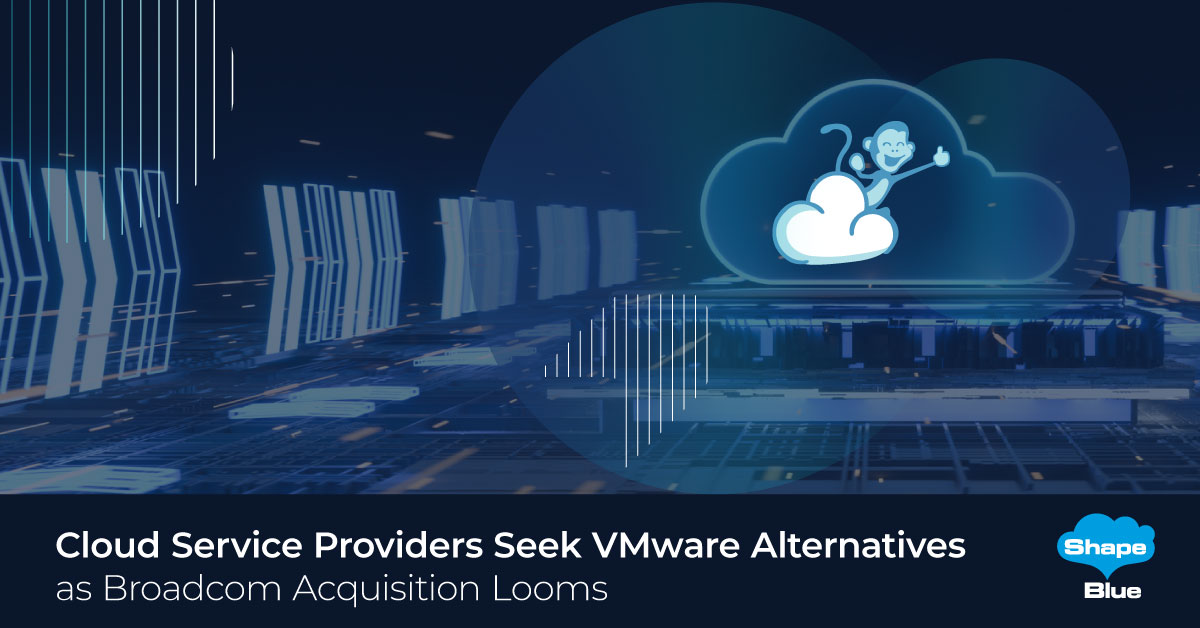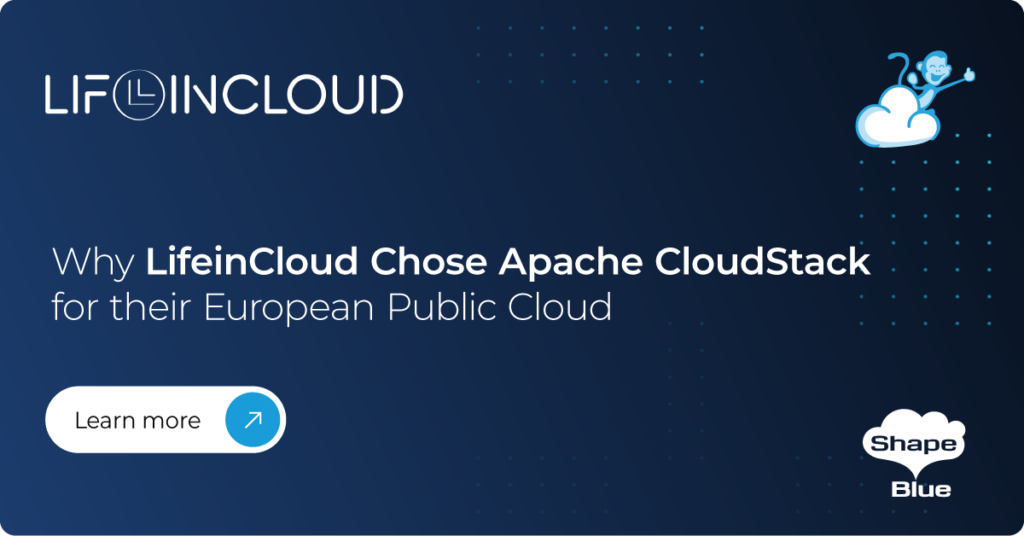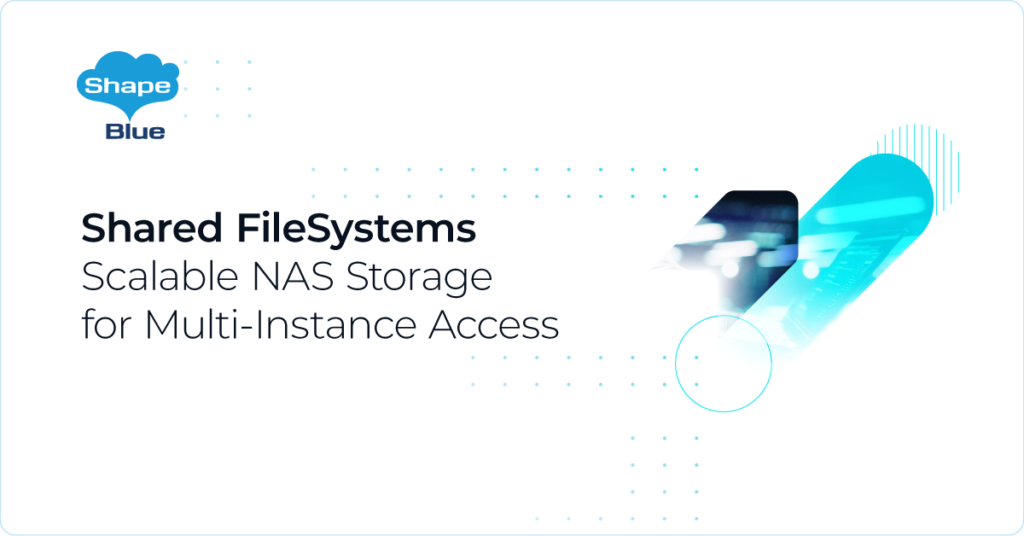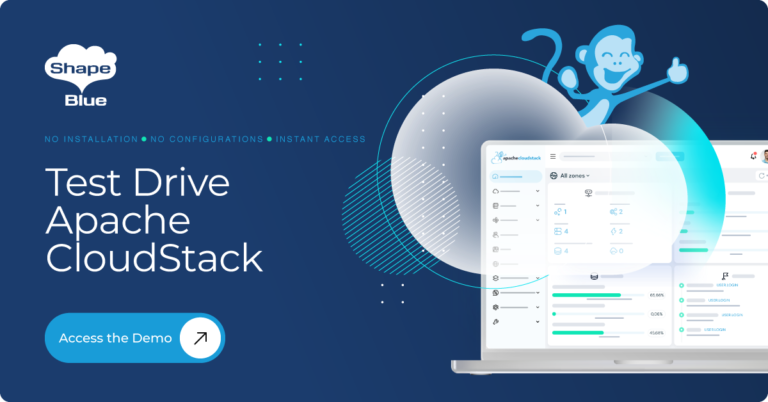Decoupling VMware from the stack accounts for 50% of new CloudStack projects!
The Broadcom-VMware deal has created huge uncertainty for many users over the last months. Enterprises may be able to wait to see the final outcome. Still, the service provider space, where margin and long-term product stability are key, is already looking to mitigate these risks.
Broadcom’s acquisition of VMware, a deal worth an eye-water $69 billion, was announced in May 2022, with Broadcom saying at the time, “the combined company will provide enterprise customers an expanded platform of critical infrastructure solutions to accelerate innovation and address the most complex information technology infrastructure needs.”. The deal was recently been approved by regulators.
But the deal has introduced a high level of uncertainty regarding future pricing policies and innovation strategies with existing customers. With Broadcom’s focus on larger customers, demonstrated through acquisitions such as Symantec and CA Technologies, many companies are actively seeking alternatives that enable them to build a reliable, future-proof cloud infrastructure while effectively managing costs and fostering innovation.
In a recent survey (August 2023), 52% of organizations adopting Apache CloudStack cited VMware migration as a key driver for their implementation. This is up from only 8% of respondents 12 months earlier.
“In the last few months, we have seen massive interest in Apache CloudStack as an enabler for people to remove their VMware lock-in,” says Giles Sirett, CEO of ShapeBlue – a leading global CloudStack integrator. “In terms of what’s driving our customer’s projects, the situation with VMware currently accounts for more than half of those projects.”
Apache CloudStack gives organizations the ability to move to a mixed hypervisor environment and to decouple their automation layer from VMware.
Sirett continued, “For obvious reasons, organizations are worried now about their long-term dependency on VMware. Apache Cloudstack isn’t a like-for-like replacement but adds a translation layer between VMware and other tooling. As it supports multiple hypervisor types (including VМware, KVM, Xen & XCP-ng) it then gives organizations the ability to move workloads to alternative hypervisors seamlessly”.
“If we look at those organizations, the majority are cloud service providers and telcos – which is logical as licensing costs are a direct cost of sale for them. However, it is also very interesting to see a number of traditional enterprise organizations also adopting the same approach.”
Apache CloudStack is a free-to-use open-source technology that allows organizations to build IaaS cloud environments or orchestrate their internal data centers. It presents one API, irrespective of the underlying hypervisor used.
Commenting on alternative hypervisors, Sirett added: “We’re seeing more organizations targeting KVM or XCP-ng as their hypervisor of choice going forward, but this is a long-term strategy: VMware continues to be part of the mix for most organizations”.
The migration from VMware to a CloudStack and KVM-based IaaS environments can not only save companies from long-term infrastructure issues and worries but seems to bring significant cost decreases.
In a recent analysis, comparing VMware’s IaaS offerings to to alternatives, it was shown that service providers could save 69% in ongoing licensing and maintenance costs by adopting alternatives.
Discover more about Apache CloudStack as a VMware Alternative:
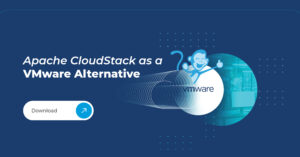 Searching for an open-source VMware alternative? Apache CloudStack is an open-source VMware replacement that makes it easy for service providers and enterprises to migrate to fully open-source virtualization management and eliminate vendor dependency once and for all!
Searching for an open-source VMware alternative? Apache CloudStack is an open-source VMware replacement that makes it easy for service providers and enterprises to migrate to fully open-source virtualization management and eliminate vendor dependency once and for all!
Apache CloudStack as a VMware alternative offers a comprehensive set of features that cater to the needs of enterprises and service providers looking for an open-source virtualization and cloud management solution.
VMware Alternatives Comparison Matrix: Side-by-side comparison with CloudStack as an open-source VMware alternative
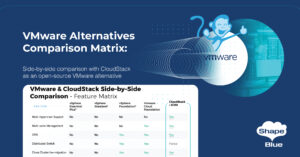 In this analysis, we embark on a detailed exploration of the features offered by VMware’s suite of products in comparison to those provided by CloudStack’s open-source platform, which leverages KVM for virtualization purposes. It is important to recognize from the outset that the comprehensive range of functionalities available through VMware’s offerings might not be entirely matched by the open-source CloudStack suite, but, in the meantime, it adds other features without additional costs that can make a difference to organisations and unleash the potential of vendor lock-in businesses.
In this analysis, we embark on a detailed exploration of the features offered by VMware’s suite of products in comparison to those provided by CloudStack’s open-source platform, which leverages KVM for virtualization purposes. It is important to recognize from the outset that the comprehensive range of functionalities available through VMware’s offerings might not be entirely matched by the open-source CloudStack suite, but, in the meantime, it adds other features without additional costs that can make a difference to organisations and unleash the potential of vendor lock-in businesses.
Giles is CEO and founder of ShapeBlue and is responsible for overall company strategy, strategic relationships, finance and sales.
He is also a committer and PMC member of the Apache CloudStack project and Chairman of the European Cloudstack User Group, actively helping promote brand awareness of the technology.
Giles can regularly be heard speaking at events around the globe, delivering visionary talks on cloud computing adoption and more specifically on Cloudstack technologies.
Before ShapeBlue, Giles held C-Level technology positions for 15 years including founder and CEO of Octavia Information Systems, a leading UK Managed Service Provider.
Giles holds a BSc in Engineering Physics from Sheffield Hallam University. Outside work, Giles is married with two teenage children. He coaches children’s rugby, is a competitive masters swimmer and can regularly be seen crying when his beloved Tottenham Hotspur lose.
